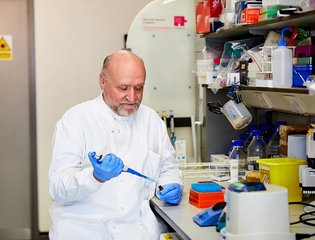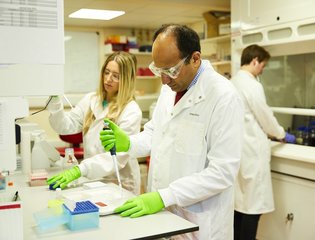Is it possible to screen for ovarian cancer?

Lead researcher: Professor Ahmed Ahmed
Where: Weatherall Institute of Molecular Medicine, University of Oxford
Theme: Early detection
The earlier ovarian cancer is detected, the better chance a woman has of survival. Professor Ahmed Ahmed and his team are working to better understand how ovarian cancer starts in order to develop the world’s first ovarian cancer screening tool.
In cervical cancer, we know exactly where the pre-cancerous cells begin and how they develop over a number of years until they finally become cancer. The cervical smear test is so effective because doctors know exactly where to look, and what they are looking for. Unlocking this information for ovarian cancer is crucial to develop a screening tool to detect it at its earliest stages. Right now, the way ovarian cancer starts is unclear.
However, Professor Ahmed and his team have already made a key discovery: a protein called SOX2 is far more prevalent in the Fallopian tubes of women with or at risk of ovarian cancer.
Professor Ahmed’s goal is to learn as much as possible about the role of biological markers, like SOX2, that flag the growth of ovarian cancer, and whether these markers could be used to develop a screening tool. The team will also be using state-of-the-art technology to look at different types of cells in the Fallopian tubes and uncover how and why they become cancerous in the first place.
Where are we now?
Ahmed has learnt about how the cells in the Fallopian tube maintain themselves by studying miniature versions of organs called organoids (in the lab). They identified two key molecules which help model how ovarian cancer initiates.
They also compared the DNA of over 300 non-cancerous Fallopian tubes with the DNA of cancerous Fallopian tubes. They found evidence that faults in the DNA alone are not enough to cause healthy cells to become cancerous. The discovery takes them a step closer to constructing the story of how cells become cancerous in ovarian cancer. By identifying key molecules involved in this early transformation they can discover new markers that could be used in pre-cancer detection.


